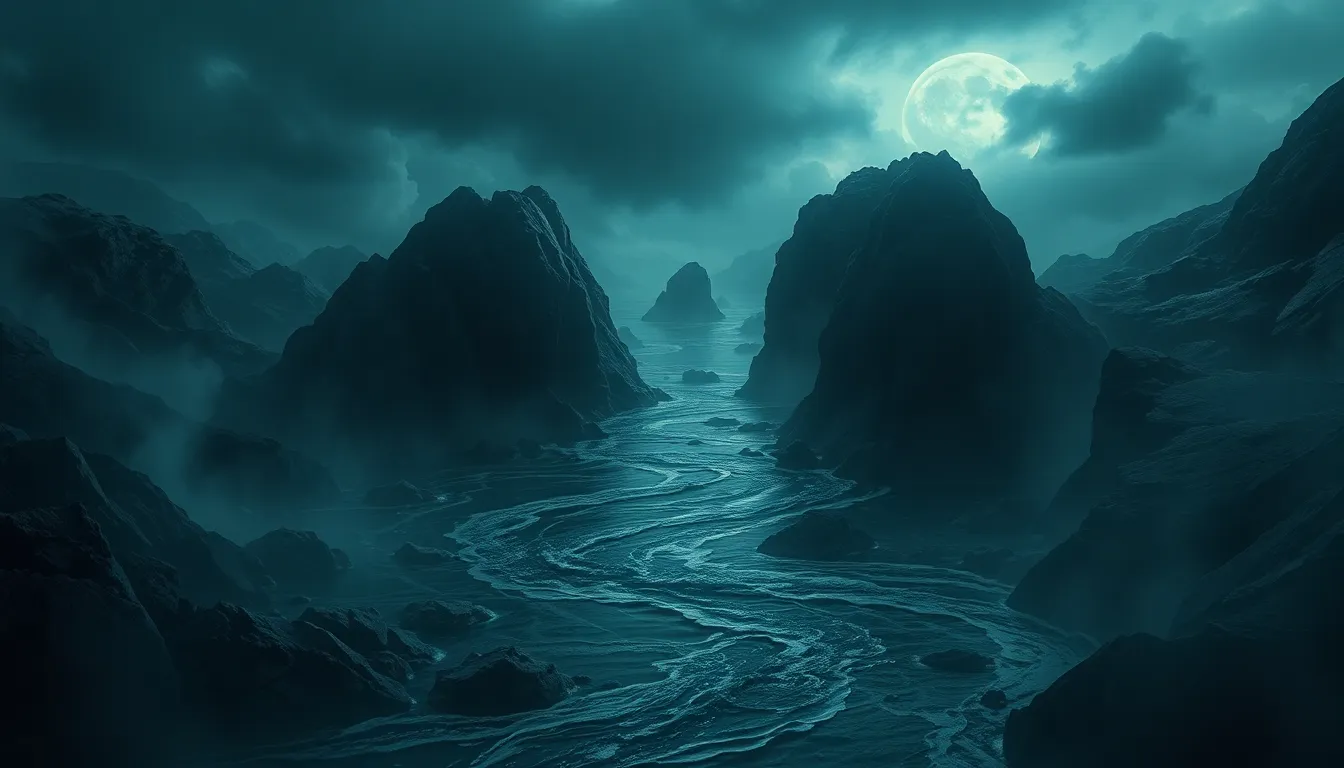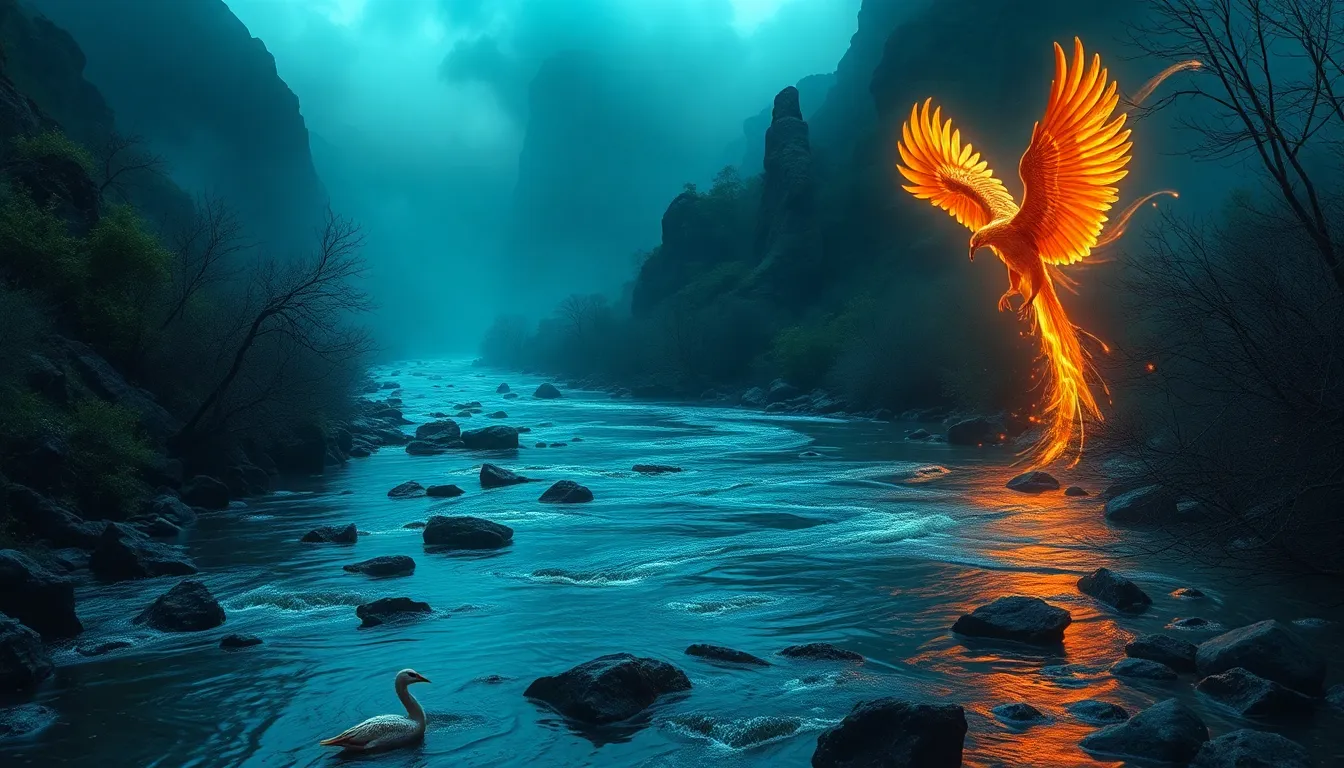The River of Shadows: Myths of Darkness and Mystery
I. Introduction
The concept of the “River of Shadows” serves as a powerful metaphor for the unknown, the unconscious, and the realms of mystery that lie beyond our understanding. This metaphor encapsulates the essence of darkness in various mythological narratives, which often explore themes of fear, transformation, and the duality of existence.
The significance of darkness and mystery in mythology cannot be understated; they serve as vital elements that shape human beliefs, behaviors, and cultural identities. Myths often delve into the unknown, presenting darkness as both a source of danger and a space for potential rebirth and renewal.
This article aims to explore the multifaceted nature of darkness in mythology, examining historical contexts, common themes, notable myths, cultural interpretations, psychological implications, modern adaptations, and the role of nature. Through this exploration, we will uncover the enduring allure of darkness in human storytelling.
II. Historical Context of Darkness in Mythology
Darkness has been a prevalent theme across ancient civilizations, serving as a backdrop for the divine and the demonic alike. In early religious practices, darkness was often associated with the underworld, representing both fear and reverence.
Different cultures have ascribed various meanings to shadows:
- In Mesopotamia, darkness was linked to chaos and the primordial state before creation.
- In Ancient Egypt, the darkness of the underworld was a place of judgment and transformation.
- Native American cultures often view darkness as a necessary counterpart to light, essential for balance in nature.
III. Common Themes in Myths of Darkness
Many myths explore the duality of light and dark, illustrating the balance between these opposing forces. The concept of the underworld, found in numerous cultures, serves as a prominent theme where darkness reigns supreme.
Another common motif is the archetype of the shadow figure, representing the darker aspects of humanity and the psyche. These figures often serve as antagonists or guides, challenging protagonists to confront their fears.
IV. Notable Myths Centered Around Rivers of Shadows
Several myths prominently feature rivers that symbolize the journey through darkness:
A. The River Styx in Greek mythology
The River Styx is one of the most famous rivers of the underworld. Its significance lies in the belief that souls must cross it to reach their final resting place.
- Significance of crossing the river: Crossing the Styx symbolizes the transition from life to death, marking the beginning of the afterlife journey.
- Role of Charon, the ferryman: Charon is tasked with transporting souls across the river, demanding payment in the form of an obol to ensure safe passage.
B. The River Acheron and its representation of sorrow
Often referred to as the “river of woe,” the Acheron embodies the despair associated with death and the afterlife. It serves as a poignant reminder of the sorrow that accompanies loss.
C. The Nile and its association with both life and death in Egyptian mythology
The Nile River holds a dual significance in Egyptian mythology, representing both fertility and the afterlife. Its annual flooding brings life to the land, while it also serves as a boundary to the realm of the dead.
V. Cultural Interpretations of Darkness
Across cultures, myths related to darkness reveal a diverse range of interpretations:
A. Indigenous myths and their relationship with the natural world
Many indigenous cultures see darkness as a time of reflection and introspection, integral to the cycles of nature.
B. Mythology of the Celts and the significance of the Otherworld
In Celtic mythology, the Otherworld is often depicted as a place shrouded in mist and shadow, representing both the unknown and the mystical.
C. Asian perspectives on shadows and darkness in folklore
Asian folklore often portrays darkness as a place of hidden knowledge and potential, where spirits dwell and the unseen influences the seen.
VI. The Psychological Implications of Darkness
From a psychological standpoint, darkness holds significant meaning. Jungian analysis emphasizes the shadow archetype, representing the repressed aspects of oneself.
Darkness can symbolize the unconscious mind, a repository of fears, desires, and unresolved conflicts. Confronting these shadows is crucial for personal growth and self-awareness.
Moreover, engaging with one’s darkness can have therapeutic value, fostering healing and transformation through acceptance and integration of these hidden aspects.
VII. Modern Adaptations of Myths of Darkness
The influence of dark mythology permeates contemporary literature and cinema, inspiring a resurgence of interest in these themes:
- Novels and films often draw upon the archetypes and narratives associated with darkness, exploring the human condition through these lenses.
- Works such as Neil Gaiman’s “American Gods” and Guillermo del Toro’s films highlight the interplay between light and shadow, myth and reality.
VIII. The Role of Nature in Myths of Darkness
Rivers serve as potent symbols in myths of darkness, representing pathways to the unknown and gateways to transformation. Their flowing nature embodies the transition between life and death, highlighting the cyclical aspects of existence.
The relationship between natural landscapes and mythological narratives reveals how humanity seeks to understand the mysteries of life through the lens of nature.
IX. Criticism and Reinterpretation of Dark Myths
In contemporary discourse, traditional interpretations of dark myths are often critiqued and reexamined:
- Feminist perspectives challenge patriarchal narratives within myths, seeking to reframe the roles of female figures associated with darkness.
- Social changes prompt a reevaluation of the archetypes and their implications in modern storytelling.
Reimagining shadows in modern narratives allows for a broader exploration of identity, culture, and the human experience.
X. Conclusion
In summary, the exploration of darkness and mystery through the metaphor of the “River of Shadows” reveals the rich tapestry of human mythology. From ancient beliefs to contemporary interpretations, darkness remains an enduring theme that captivates our imagination and invites introspection.
The allure of darkness is not merely one of fear; it is a call to explore the depths of the unknown, to face our shadows, and to seek enlightenment through the interplay of light and dark.



